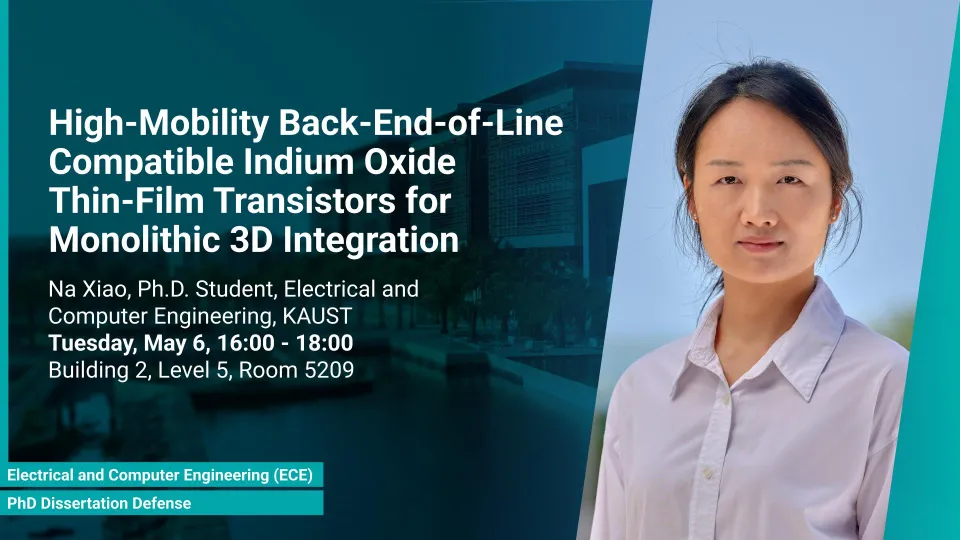
Na Xiao
Na Xiao's research focuses on developing high-mobility back-end-of-line (BEOL) compatible indium oxide (In2O3) thin-film transistors (TFTs) for monolithic 3D integration (M3DI).
Biography
Na Xiao is a Ph.D. candidate in Electrical and Computer Engineering at King Abdullah University of Science and Technology (KAUST), under the supervision of Professor Xiaohang Li. She earned her M.S. degree in Chemistry from Soochow University at Institute of Functional Nano & Soft Materials (FUNSOM) in 2018.
Research Interests
Na Xiao's research focuses on semiconductor fabrication, semiconductor materials and devices, oxide semiconductors, and nanoscale device technologies, and characterization of wide band gap materials.
About
This research focuses on developing high-mobility, stable, and low-temperature processed indium oxide (In2O3) thin-film transistors (TFTs) for back-end-of-line (BEOL) compatibility in monolithic 3D integration (M3DI) applications.
Education
- Master of Science (M.S.)
- Chemistry, Soochow University, China, 2018

